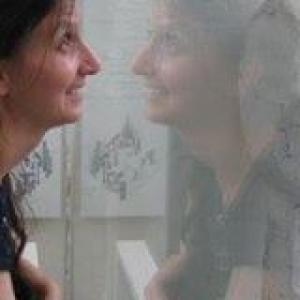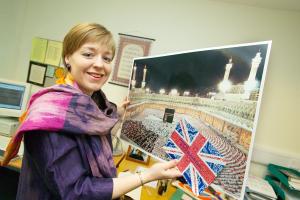Resources

We can teach the ongoing struggle for civil rights by taking students to the current day struggle via Instagram and sacred sites. Who on Instagram is doing the work that the great ancestral photographers like Mikki Ferrill, Louise Martin, Moneta Sleet Jr., John Shearer and Gordon Parks did? One is Joshua Rashaad McFadden. His Instagram is liberative in every way. We can invite our student to share who they are following, while also inviting them to follow those doing the work of showing us the struggle. What this does is show the students the power of photography in the liberation struggle yet lives as it did in the 1950s and 1960s. Moreover it takes them out of the classroom and into the real world via a virtual photography feed. The second step in this process is taking student to sacred sites that are living. When you go to the field and experience the sites where the struggle occurred in your town or the town the student is living in, if they are taking the course online. Go and see, feel and hear the power of the sacred sites where the struggle was and is being waged. In the video below I take you to the sacred site where we in Atlanta honored the life of Rayshard Brooks. Rayshard Brooks was lynched by the Atlanta Police Department on June 12, 2020. The Wendy’s where the lynching occurred has become a sacred site of remembrance and resistance. I take you there in this video and you hear from one the leading modern day civil rights photographers alive today. Joshua Rashaad McFadden is someone you want to follow. May the videos speak for itself. http://www.joshuarashaad.com https://www.instagram.com/joshua_rashaad/ [su_youtube_advanced url="https://youtu.be/XpFNU0eKzwA"]

Daniel Madigan, my mentor when I first began teaching Islamic studies, considers his introductory course an opportunity to help students understand Islam as a religious choice and vision. This, in contrast to a politicized framework wherein Islam, is a problem to be solved. Marshall Hodgson also refers to the vision of Islam early in volume one of his series, The Venture of Islam. He writes, “Islamicate society represents, in part, one of the most thoroughgoing attempts in history to build a world-wide human community as if from scratch on the basis of an explicitly worked out ideal.” In an earlier blog post, I recommended the use of graphic novels and comics in teaching Islam because they are substantive and because students benefit from the engagement with visually rich, multimodal texts. Courses in religious studies have an unfortunate tendency toward abstraction. Separating ideas from their cultural expression is a disservice to our students and Islamic or Islamicate culture itself, which represents the “highest creative aspirations and achievements of millions of people;” Hodgson again. If we are to help students appreciate a vision, we must show them how that vision is lived, and the cultural heritage it has built over the centuries. In this post, I want to highlight some of the online resources available through museum websites, particularly the website of The Metropolitan Museum of Art in New York, and provide ideas for how these tools could be used in the classroom. In conjunction with a virtual exploration, it would be ideal to send or accompany students on a museum visit but this is not always practicable. Fortunately, museums are committed to education and the advancement of knowledge in their mission statements and their online resources are often exemplary for that purpose. Teaching is sometimes isolating because it can be accomplished in isolation. A busy professor can close off the classroom and get through the term without doing the work of engaging outside institutions. But to do this job right, we need partners whose missions intersect with our own. In my experience, museum professionals are eager to help and they have created a wealth of resources to draw from. A small investment of time spent researching museum offerings or reaching out to a museum education office can pay huge dividends in terms of student learning and engagement. In fact, a more student-driven classroom can save time in the long run. Letting students take charge of their own learning means they are doing more of the work. Anyone who has visited The Metropolitan Museum of Art knows it is an overwhelming experience. Thanks to a sense of direction that allows me to get lost in my own neighborhood, I have spent the better part of an hour just trying to find my way to the right wing in the Met. Their website can provoke a similar experience. It requires a certain amount of detective work to identify the right online resource for your students and a significant amount of scaffolding to guide them to its best use. But there are unique opportunities to be found! Five decades of Met publications are available to search and download, sometimes in their entirety, for free. This collection includes a full online copy of Art of the Islamic World: A Resource for Educators that pairs well with an online lesson plan on “Arabic Script and the Art of Calligraphy” suitable for modified use in the college classroom. The Met website is also home to 82nd & Fifth, a series of two-minute videos in which curators discuss works of art that changed the way they see the world. These videos, including an engaging presentation on the official signature of Süleiman the Magnificent, are also available as part of a YouTube playlist. Projects like this provide useful modeling for classroom activities. A student can be tasked with exploring Islamic art and creating their own short video on how it has changed the way they view the world. The most powerful resource on the Met website is the ability to search its collection as a whole. Students searching for “Islam” will bring up thousands of entries, including photographs, historical information, and links to related objects and textbooks as available. This is a fantastic opportunity but it must be used wisely. Casting students into this sea of information without a clear purpose is not likely to be successful. As a colleague once instructed me, “Throwing everything against the wall to see what sticks is not a sound pedagogical strategy.” Certainly, the Met collection can inform garden-variety research papers and projects begun in the classroom but it can also provide an initial inspiration for detective work. Students might start with an item from the collection and generate questions based on its features and provenance. Finding an elaborate illustration of a drunken party from the Diwan of Hafiz, students may wonder about the relationship between intoxication and mysticism. Confronted with a folio from the Blue Qur’an, they might want to know more about the aesthetic and practical features of other Qur’anic manuscripts. The key is that students are puzzling over museum objects and formulating their own paths of inquiry leading to a more holistic understanding of Islam. Advancing toward the highest, creative and comprehensive level of Bloom’s Taxonomy, you could ask students to curate their own virtual exhibition using an online collection. Seeking out meaningful threads of continuity between temporally and geographically disparate objects is an enormously challenging task but the rewards for a job well done are great as well. Such an assignment, carefully wrought, has the potential to help students consider the vision of Islam as it was realized in material culture; not in abstraction, but as a source of creative renewal and inspiration across time and space.

Joshua Canzona Georgetown University When I was teaching public high school, a colleague in the history department approached me to express his concern about our world religions curriculum. “I am scared to touch it,” he said. What he meant, first of all, was that he felt unprepared to teach about..

Meena Sharify-Funk Associate Professor Wilfrid Laurier University “Women and Islam.” It is a subject that is surrounded by strongly held and divergent opinions, values, and beliefs, as well as by misconceptions, over generalizations, and yes, political agendas. In the 21st Century, there are many competing projects attempting to define who

Sophie Gilliat-Ray Director Centre for the Study of Islam in the UK Cardiff University I want to pick up and develop here a theme introduced in my previous blog – the idea that students in the field of Islamic Studies – and indeed Theology and Religious Studies more broadly